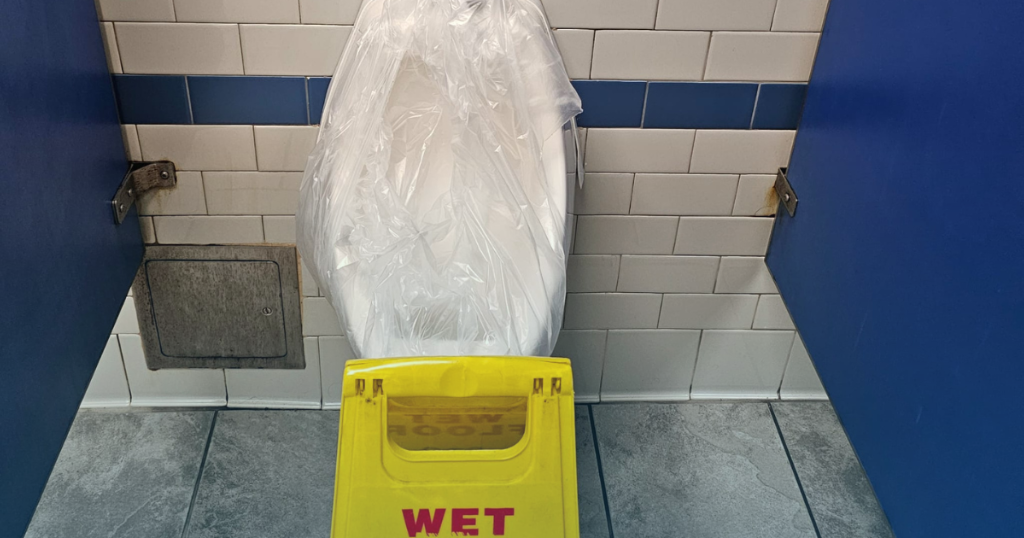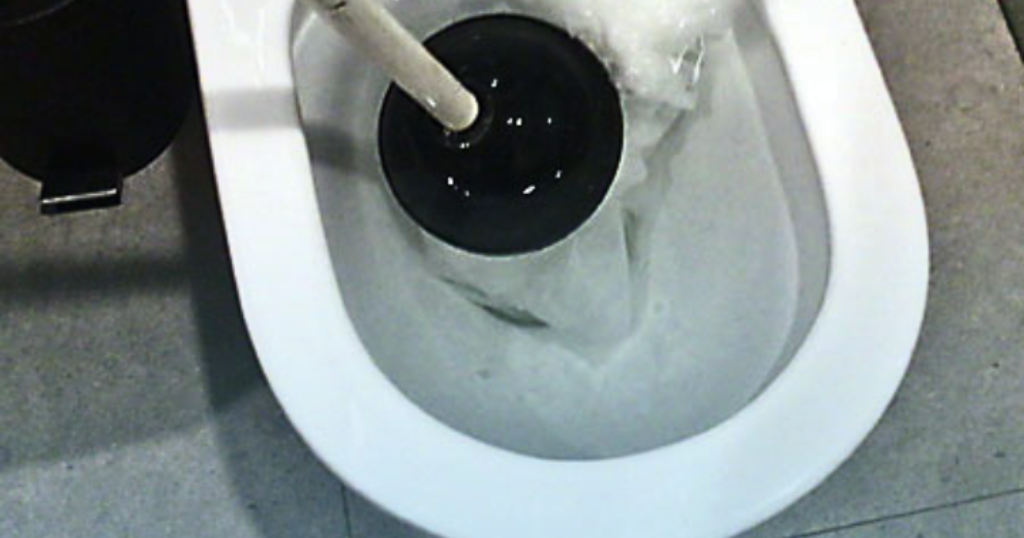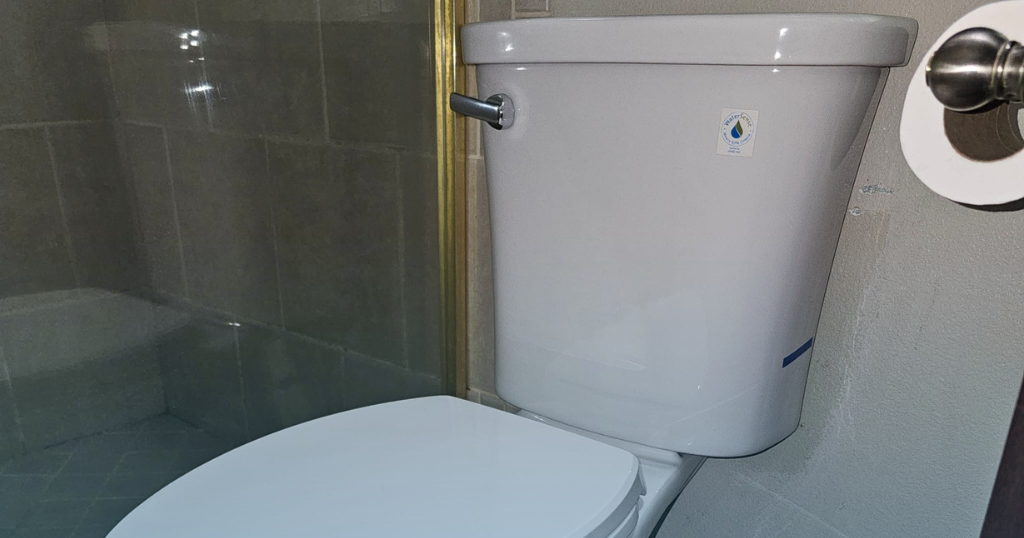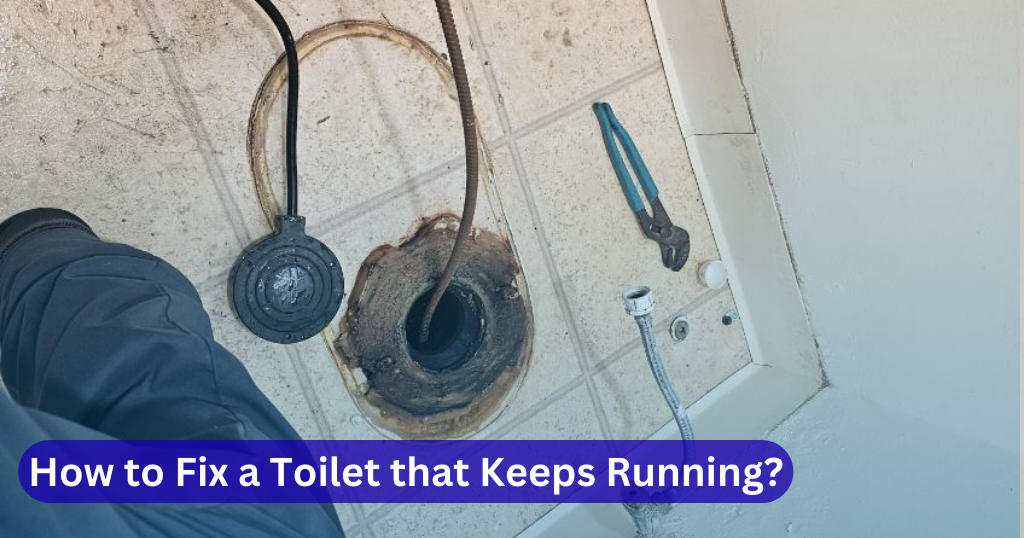A running toilet is one of the most common plumbing problems, but the good news is it’s usually an easy fix. With just a few simple adjustments or a quick part replacement, you can stop the constant water flow, lower your bill, and prevent further damage.
A continuously running toilet doesn’t just waste hundreds of gallons of water each day; it also adds to your monthly costs and shortens the life of your plumbing system. As a homeowner, it is essential to know how to address small issues before they escalate into costly repairs.
In this guide, you’ll learn how to fix a running toilet step by step, understand which parts (flapper, fill valve, float arm, or overflow tube) are involved, and get practical tips that save you time and money.
To fix the running toilet 6 easy steps
Here are 6 steps to fix a running toilet:
1. Put off the Water Supply
To detect the closed-off valve (near the toilet), rotate clockwise to stop water flow.
2. Check the Flapper
- Boost the toilet tank cover.
- Scan the flapper.
- If it is cracked or will not stamp properly.
- Fix: Replace the flapper with a new one.
3. Adapt the Float Arm
- A float arm controls the water level of the tank.
- If it is fixed too high, then water will flow into the overflow pipe.
- Fix: Bend the float arm slightly downward, or if you have a newer model, adjust the float mechanism according to the manufacture’s instructions.
4. Survey the Fill Valve
- When the fill valve is incorrect, the water will not stop properly.
- Fix: Change the fill valve if it is leaking.
5. Examine the Chain Length
- The chain should have a slight looseness because it serves to link the flush handle to the flapper.
- If it is too thin, the flapper will not seal correctly.
- Fix: Modify the chain length so it lets the flapper close fully.
6. Test for Phantom Flush
- When the toilet runs constantly, you may have a phantom flush.
- Fix: You must add food color to the tank. If the color shows in the bowl, the flapper needs replacement
Why Does My Toilet Keep Running?

If your toilet is running all the time or it randomly fills (sometimes called a phantom flush), one of these parts generally will be at fault:
- A faulty flapper (worn-out seal): A flapper that doesn’t seal well will not prevent water from running into the toilet bowl.
- An improperly adjusted float arm: In case the float arm is set too high, water spills over into the overflow tube.
- A damaged fill valve: A damaged or misaligned fill valve cannot shut off completely, so water runs continuously.
- A misaligned flush valve chain: When the chain is too tight, the flapper stays open, when it’s too loose, it cannot elevate.
- Mineral buildup in the tank components: Even small Cracks can let water escape into the toilet bowl
If your toilet runs, then one of these issues is likely the offender.
Consequences of ignoring a running toilet

The running toilet has many disadvantages, but some are listed below:
Massive Water waste and Higher Bills
Did you know running a toilet burns through hundreds of gallons of water every day? It’s like pouring money down the drain as it raises the water bill.
Increase Wear and tear on Parts
A non-stop running toilet puts direct stress on parts like the flush valve, flapper chain, and overflow tube. Over time, they wear out and break faster, complicating toilet repairs and decreasing tank efficiency.
Annoying Noise and Phantom Flushes
A running toilet produces an irritating noise, sometimes even causing phantom flushes. These random toilet runs are called phantom flushes. That constant noise disrupts the peace and comfort of the home.
Increase the risk of leaks and Water Damage
If you ignore a running toilet, there’s more pressure in the toilet tank and the bowl. Over time, stress damages seals, water supply lines, and other fittings.
For more details on serious issues, check our guide on Signs Your Plumbing System Needs Immediate Repair.
Reduce the toilet’s lifespan.
Important parts like the flapper seal, fill valve, and float arm can wear out quickly due to non-stop strain. If you don’t repair these in time, you end up replacing the whole toilet.
Unpleasant Odour and Hygiene Issues
With water running constantly, the toilet bowl and tank will have standing water that creates bad smells. Plus, the bathroom can end up less hygienic and not healthy.
Fix a Running Toilet Without Replacing Parts

Sometimes, simple tweaks can fix a running toilet without needing to replace any parts:
- If you clean the flapper with vinegar, it also eliminates mineral buildup.
- If you adapt the float, it also minimises the water level.
- If you adjust the chain, it secures the flapper for proper function.
When to Call a Professional Plumber
Some problems are best left to the experts. If your toilet keeps running even after making adjustments, you might need:
- New flush valve installation
- Complete fill valve replacement
- Expert detection of unseen leaks
At All Bros Plumbing, we’re here to tackle your toilet repairs quickly and effectively. Our licensed plumbers are skilled at fixing flappers, flush valves, fill valves, overflow tubes, and water supply lines with precision. Contact us today for fast, reliable service and trusted toilet maintenance solutions.
Frequently Asked Questions
How to fix a continuously running toilet?
You easily fix a running toilet by checking the flapper, adjusting the fill valve, inspecting the overflow tube, and replacing any worn-out parts.
Why is my toilet running even with the water turned off?
A toilet running with the water off due to a faulty flapper, a cracked overflow tube, leftover water draining slowly, or a defective fill valve.
Why does my toilet make a noise every few minutes?
A toilet usually makes noise every few minutes because of a worn flapper, a fill valve not shutting off completely, high water pressure, or a cracked overflow tube.
How to stop toilet leakage?
You can stop toilet leakage by fixing the flapper, tightening the tank bolts, securing the supply line, checking the overflow tube, and replacing worn parts.



